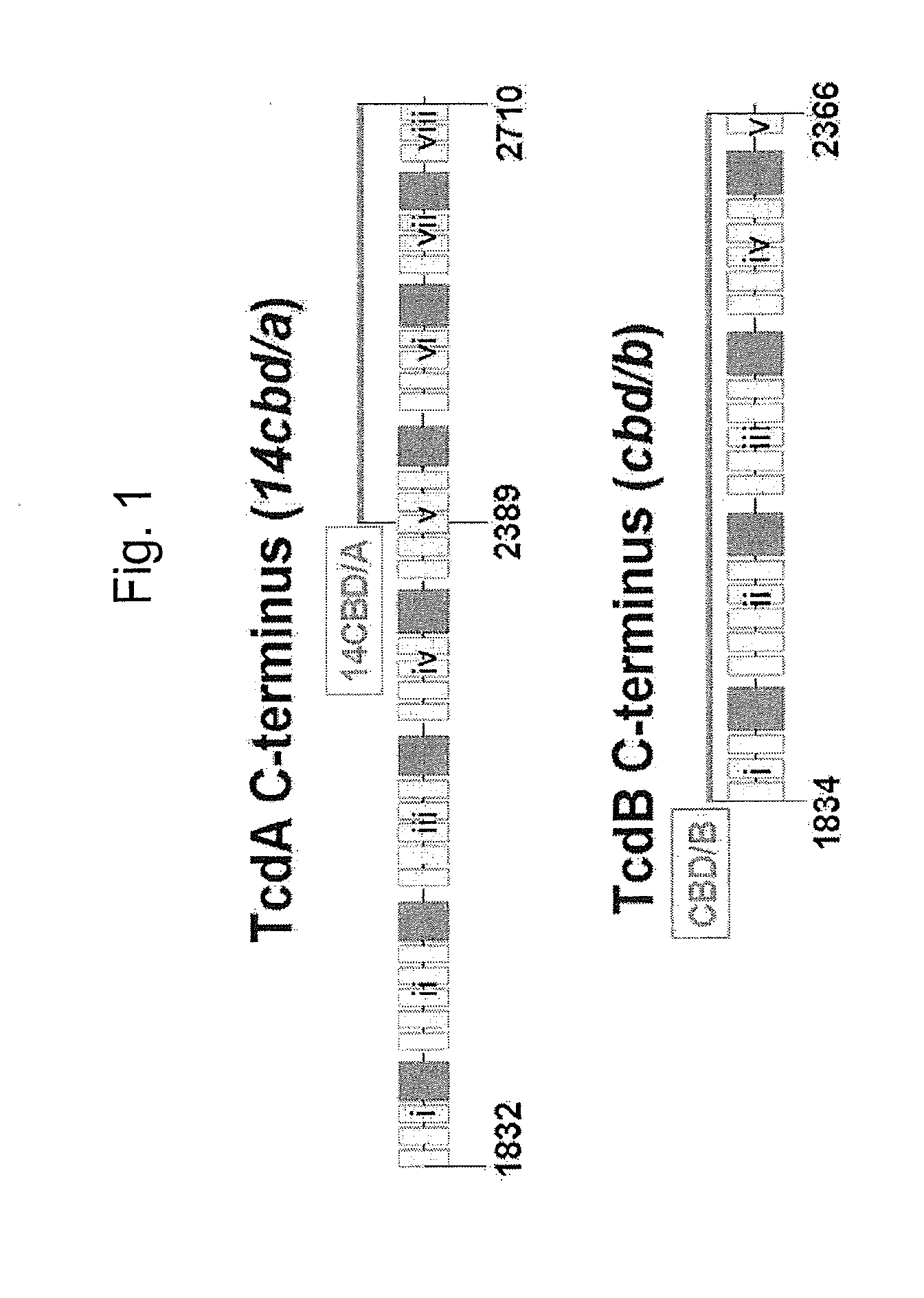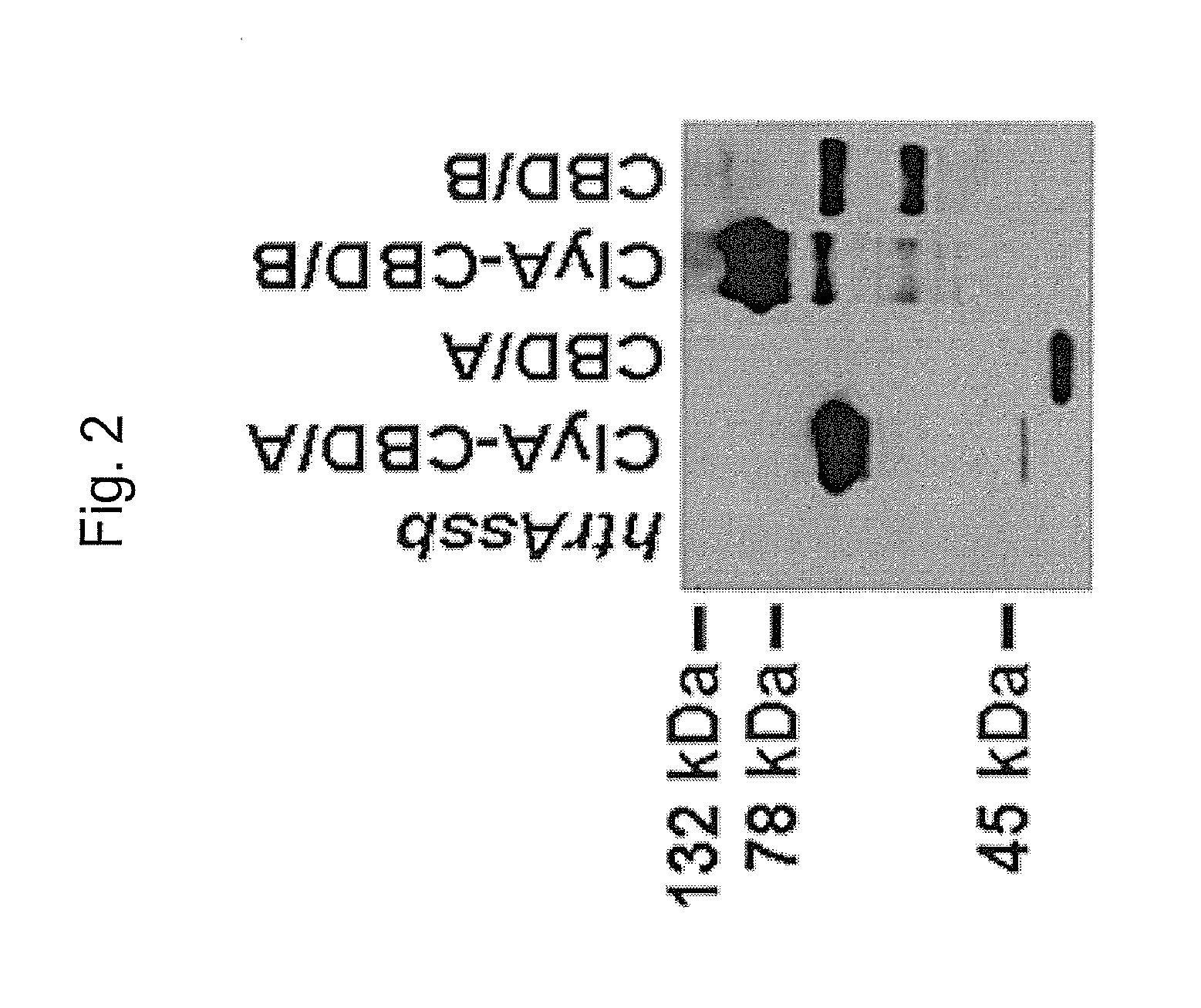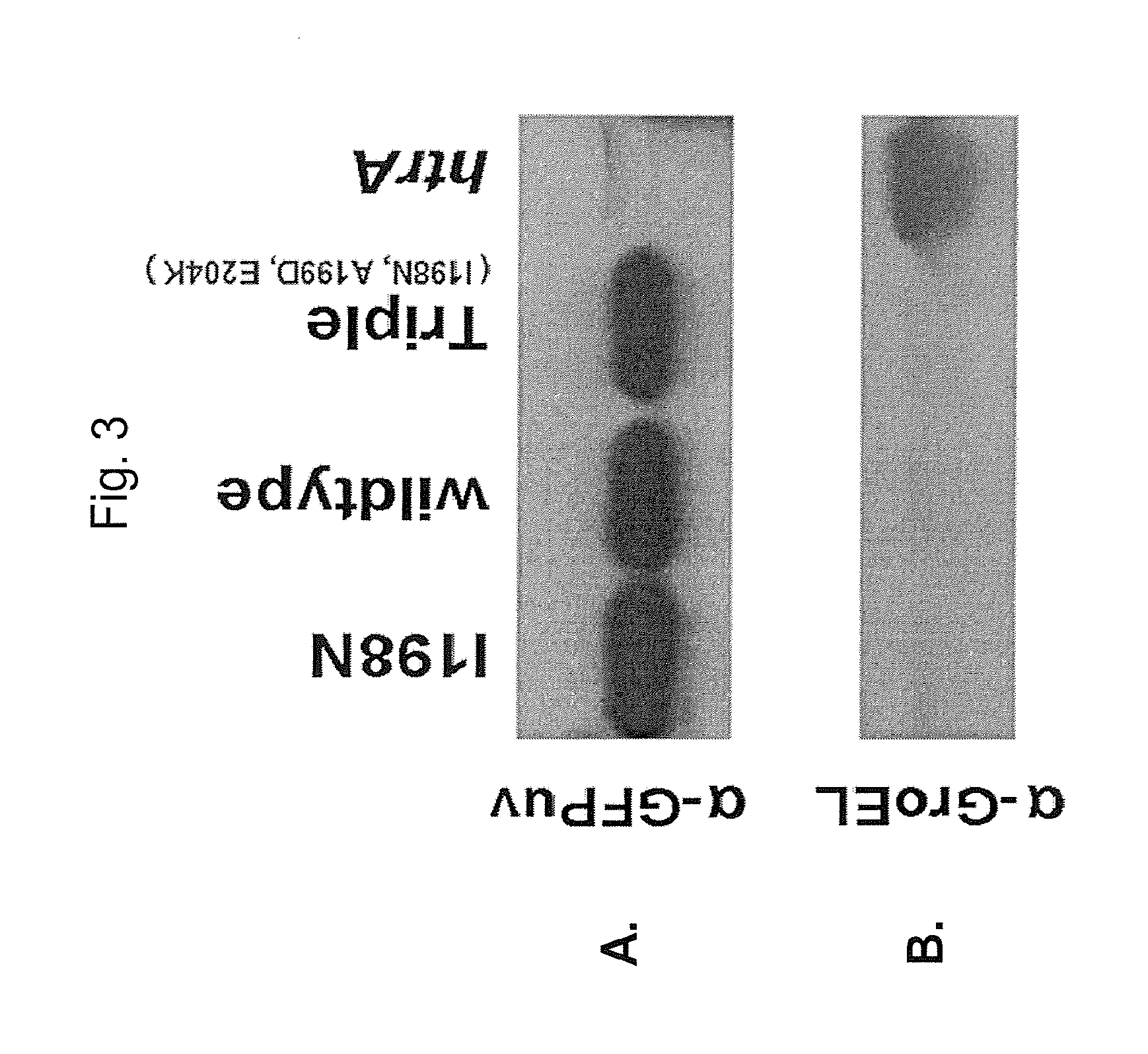Multivalent Live Vector Vaccine against Clostridium difficile-Associated Disease
- Summary
- Abstract
- Description
- Claims
- Application Information
AI Technical Summary
Benefits of technology
Problems solved by technology
Method used
Image
Examples
example 1
Expression of TcdA and TcdB in Attenuated S. Typhi Live Vectors
[0093]Two synthetic codon-optimized genes have been engineered for efficient expression in attenuated S. Typhi live vectors. Both cassettes encode domains from the carboxyl-terminal receptor-binding region of TcdA and TcdB and include unique internal restriction sites to allow truncation should expression of the full-length cassettes prove toxic. These two cassettes encode the C-terminal 322 residues of TcdA (14CBD / A) and 533 residues of TcdB (CBD / B) (See FIG. 1). The nucleotide sequence of the codon optimized cassette of CBD / A is SEQ ID NO:1 and the amino acid sequence is SEQ ID NO:2. The nucleotide sequence of the codon optimized cassette of CBD / B is SEQ ID NO:3 and the amino acid sequence is SEQ ID NO:4.
[0094]Based on recent work from Greco et al, 14CBD / A would be expected to contain at least 3 carbohydrate receptor-binding sites (Greco A, Ho J G, Lin Palcic M M, Rupnik M, Ng K K. Carbohydrate recognition by Clostridi...
example 2
Molecular Evolution of Non-Hemolytic Alleles of clyA
[0100]ClyA was phenotypically identified in Salmonella strains as a cryptic hemolysin, present in several serovars including the licensed S. Typhi vaccine strain Ty21a (Oscarsson J, Westermark M, Lofdahl S et al. Characterization of a pore-forming cytotoxin expressed by Salmonella enterica serovars typhi and paratyphi A. Infect Immun. 2002; 70:5759-5769). Although in all murine and non-human primate experiments conducted to date adverse reactions to the vaccine strains have never been observed, ClyA still possesses hemolytic activity in vitro, and could therefore theoretically be considered a virulence factor with the potential to cause adverse reactions in humans. To remove hemolytic activity from S. Typhi clyA, it was elected to molecularly evolve a codon-optimized allele of clyA genetically fused to the gfpuv allele of pSEC92gfpuv. Fusion of foreign protein domains to the carboxyl terminus of ClyA reduces the hemolytic activity ...
example 3
Immunogenicity in Mice of PA83 Delivered by SSB-Stabilized Plasmids in CVD 908-htrA and CVD 908
[0104]To further improve the clinical acceptability of the live vector vaccine, a non-antibiotic plasmid selection system has been developed for use in attenuated bacterial vaccine strains. Typically, foreign proteins are expressed within live vectors from multicopy expression plasmids that do not encode transfer functions and are not considered to be self-transmissible. Antibiotic resistance markers are usually inserted into expression plasmids for selection purposes after introduction of plasmids into live vectors. Until recently, these resistance markers were considered to pose no risk for complicating or causing failure of clinical antimicrobial treatments for 3 important reasons: 1] the expression plasmids (and accompanying resistance markers) could not be efficiently mobilized from live vector donors to a recipient, 2] the genes used encoded resistance to antibiotics not in widesprea...
PUM
| Property | Measurement | Unit |
|---|---|---|
| Time | aaaaa | aaaaa |
| Time | aaaaa | aaaaa |
| Time | aaaaa | aaaaa |
Abstract
Description
Claims
Application Information
 Login to View More
Login to View More - R&D
- Intellectual Property
- Life Sciences
- Materials
- Tech Scout
- Unparalleled Data Quality
- Higher Quality Content
- 60% Fewer Hallucinations
Browse by: Latest US Patents, China's latest patents, Technical Efficacy Thesaurus, Application Domain, Technology Topic, Popular Technical Reports.
© 2025 PatSnap. All rights reserved.Legal|Privacy policy|Modern Slavery Act Transparency Statement|Sitemap|About US| Contact US: help@patsnap.com



